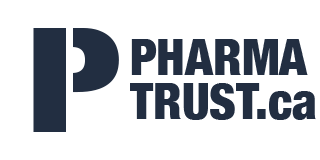Prior to distributing your drugs in Canada, you will need to understand these processes:
- Drug review and authorization
Prior to selling any drug in Canada, you will need to obtain a license number for your medication (It’s called a DIN for a prescription drug and an NPH for a natural health product). For you to obtain a license to sell this product, you will need to submit a dossier to Health Canada and wait until the evaluation is completed. This might take from 6 months to 1 year in the case of medication. Companies frequently believe that they can submit the same files that are submitted to the FDA, but the Canadian Health Authority form is different than the FDA form.As an example, you can not add or remove documents from your dossier as you could with the FDA. If Health Canada determines that a drug’s benefits outweigh its risks, and the risks can be mitigated, the drug is authorized for sale in Canada and they will send you a non-objection letter (NOL).
2. Drug procurement and distribution
- Who will buy your drugs?
Prior to determining how you will distribute your drug and which 3PL you will choose, you want to know who your potential buyers are. For example, if your drug is a biologic used in oncology, you will want to distribute your drug to specialized hospitals across the country. In Canada, understanding these trends is complicated by differences in public funding and delivery models for cancer therapy across provinces. Each province maintains a public drug plan formulary, which lists the drugs and conditions for which the province will reimburse prescription drugs for an eligible insured person under the public plan. You will therefore need to apply to each province if you want to distribute your product to hospitals. This is a complex process and pricing and reimbursement specialists can guide you through this process. We do not suggest you venture into pricing and reimbursement without extensive experience (Did you know that once you set a price of a drug in Canada it is very hard to change it afterwards?).
- How will you store and ship your drugs?
The storage of your drugs is critical and will be inspected by Health Canada.Most of the 3PL have special licenses to store your drugs. Getting the right 3PL is important as this can have cost implications. Some medications are considered narcotics and need a special, controlled and secure environment for storage. We suggest you use a smaller certified 3PL to start your journey. If you need the right partner to store and ship your medication, we are here to help you.
- How will the price of my drug be set?
According to 2010 statistics, Canadians have among the highest and fastest-growing levels of per-capita drug spending in the world, second only to the US. A key concept in drug pricing is the difference between brand names and generic drugs.
For a brand-name drug, the price is set by the manufacturer, and limited by the federal government. A patent in Canada lasts 20 years. However, some of that time is taken up while the drug is in clinical trials and approval. Brand name drugs account for about 75 per cent of pharmaceutical spending in Canada.
Generic drug companies can manufacture and sell drugs after all relevant patents expire. Provinces currently set limits on generic prices, as a percentage of brand name drugs, ranging from 18 to 40 per cent across provinces.
Many Canadians have private health insurance, which can provide a variety of drug coverage plans. Some plans may cover 100 per cent of drug costs — others cover a percentage. This is called a co-pay.
The Patented Medicine Prices Review Board (PMPRB) determines the maximum price of a brand-name drug by comparing it to the prices of other similar drugs.If there are no similar drugs, they compare the prices internationally in France, Germany, Italy, Sweden, Switzerland, the United Kingdom and the USA to determine if the price is excessive.
- How can I reach more customers and increase my sales?
Having a drug approved is only the first step of a long process to get your medication into the Canadian market. During your launch, you will certainly have marketing and commercial departments involved. Marketing in Canada is very different than in the US. Marketing is regulated by the Food and Drugs Act as well as by the Food and Drug Regulations. Multiple factors are taken into consideration when deciding how and when to reach your customers. In general, direct client marketing is prohibited and can be subject to significant fines if your competition decides to submit a complaint to Health Canada.
Your product monograph is of prime importance and will dictate your marketing and selling content. It is therefore important for your company to review your product monograph with a professional prior to submitting it to Health Canada.
Without a proper channel, your drug will probably stay on the shelf. Building a network around your product is important and can be done via virtual visits to HCPs, ad board meetings, conferences or MSLs, for example. Your strategy and budget should be ready prior to your launch. Having an expert look into what you will require in Canada will be of prime importance.


